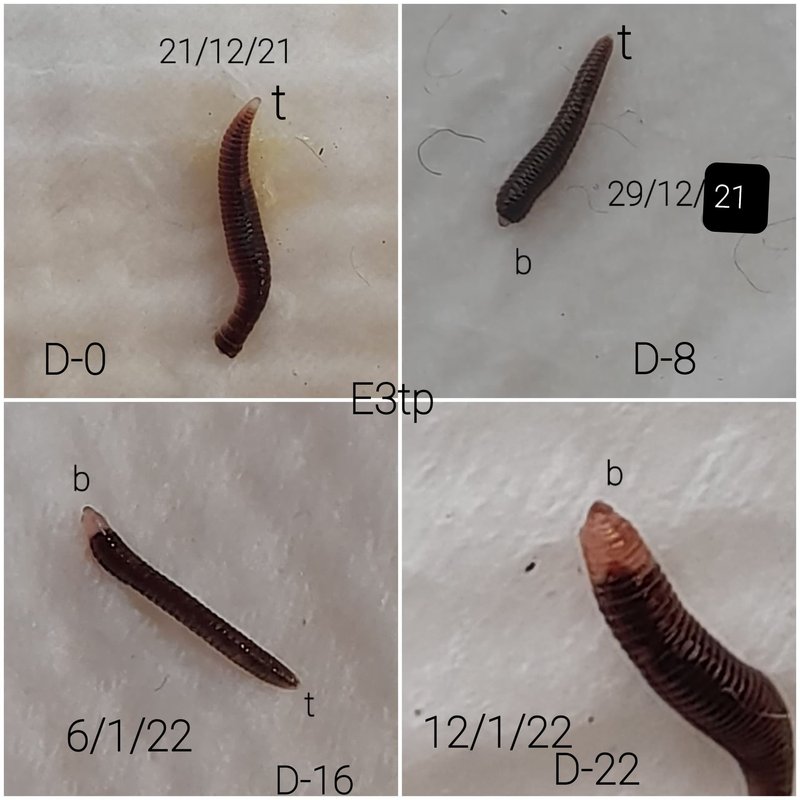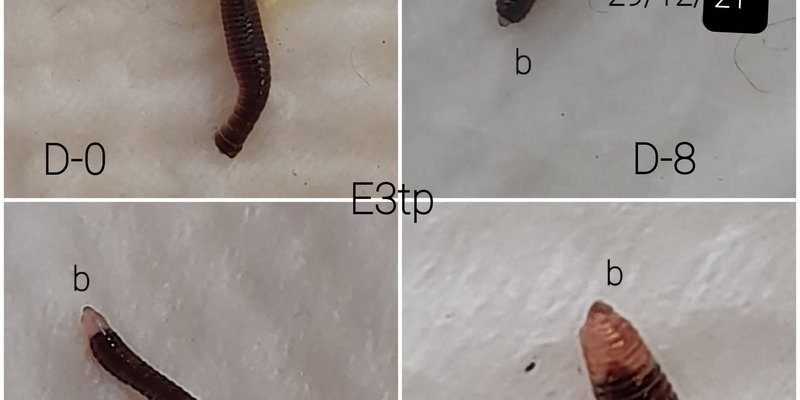
Let’s dive into the world of earthworm regeneration. Think of it as exploring a hidden treasure—there’s a lot more than meets the eye under the soil. From how they manage to regenerate to why this ability matters for the ecosystem, we’ll uncover the secrets behind these remarkable creatures.
What Is Earthworm Regeneration?
Earthworm regeneration refers to the ability of these resilient creatures to regrow lost segments of their bodies. It’s a bit like when you accidentally snip off a piece of a plant, and it sprouts back. Earthworms can lose parts of their bodies due to predators, environmental factors, or even accidents. Instead of succumbing to injury, they tap into their natural powers of healing and regeneration.
Now, you’re probably wondering how this works at a biological level. Earthworms have special cells called blastema cells that aid in regeneration. When an earthworm loses a segment, these cells gather at the injury site, and through a series of complex biological processes, they start transforming into various tissues needed for regrowth. It’s almost like a tiny construction crew showing up to fix a building that’s been damaged.
Not all parts of the earthworm can regenerate, though. They can typically regrow lost segments but not their entire bodies. So, if you cut an earthworm in half, it’s the head portion that will survive and regenerate its tail, while the tail end will sadly not make it.
Why Can Earthworms Regenerate?
So, why can earthworms regenerate when many creatures cannot? One reason lies in their unique anatomy. Earthworms have a simple, segmented body structure, which allows them to manage the regeneration process more efficiently than many other animals. The segments contain the same basic layout of muscles, nerves, and blood vessels, making it easier for the body to reorganize and heal after losing a part.
Additionally, earthworms have a high capacity for cellular division, meaning their cells can replicate and multiply quickly. This rapid cell division is crucial during regeneration, as it helps build new tissues without much delay. Think of it like a city that can quickly mobilize workers to repair damage after a storm.
Their regenerative abilities also play a vital role in their survival. In nature, earthworms face multiple threats, from birds to rodents. Being able to lose a part of themselves and survive means they can elude predators more effectively. It’s like having a built-in escape route!
The Regeneration Process in Detail
When an earthworm loses a segment, the regeneration process kicks in almost immediately. Here’s how it typically unfolds:
1. Wound Healing: Within hours of losing a segment, the earthworm’s body starts to heal the wound. Skin cells rapidly proliferate to cover the injury, forming a protective barrier. This is similar to how our skin heals after a cut.
2. Blastema Formation: Once the wound is healed, the magic truly begins. The blastema cells gather at the site of the loss, starting to develop into the necessary tissues. This process is crucial since it sets the foundation for regeneration.
3. Development of New Segments: Over the next few weeks, the new segments gradually form. These segments initially appear as small bumps but will continue to grow and differentiate into fully functioning parts, complete with muscle fibers and nerves.
This regeneration takes time—anywhere from a few weeks to months, depending on environmental conditions like temperature and the earthworm’s health. It’s a long journey, but seeing an earthworm with its newly regenerated tail is quite a sight!
Environmental Factors Affecting Regeneration
The ability of earthworms to regenerate can be heavily influenced by their environment. Several factors play a part in how effectively they can heal and regrow lost segments:
1. Soil Quality: Healthy soil with rich organic matter provides the necessary nutrients for regeneration. Poor-quality soil might not support their growth as well, making recovery more challenging.
2. Moisture Levels: Earthworms thrive in moist environments. If the soil is too dry, it can hinder their healing process. Moisture helps their skin stay supple and ready to regenerate effectively.
3. Temperature: Earthworms are cold-blooded, meaning their body temperature depends on their surroundings. Warmer temperatures can accelerate the regeneration process, while colder temperatures can slow it down. It’s like trying to repair a house in the winter—much harder, right?
4. Predator Presence: The more predators in the area, the more useful regeneration becomes. This means earthworms in high-predator areas might evolve quicker regeneration if they need to lose parts often to survive.
Key Differences in Regeneration Among Species
Not all earthworms are created equal when it comes to regeneration. Some species have remarkable regenerative abilities, while others don’t. Let’s look at how different species stack up:
- Lumbricus terrestris: This common garden earthworm can regenerate well, especially its tail segments. It’s a gardener’s friend and a great example of effective regeneration.
- Octolasion cyaneum: Known as the blue worm, it has even greater regenerative capabilities. This species can regrow larger sections and more complex structures after losing them.
- Drawida spp.: These earthworms from Asia show limited regeneration. If they lose a segment, it may not regrow effectively, which can be a disadvantage in the wild.
Comparing these species gives us insight into their evolutionary pathways. Those who regenerate better tend to thrive in environments where injuries happen more frequently. It’s an interesting dance of nature—survival of the fittest!
The Importance of Regeneration in Ecosystems
Earthworm regeneration isn’t just cool biology; it plays a significant role in the ecosystem. Here’s why it matters:
– Soil Health: Earthworms contribute to soil aeration and nutrient cycling. When they regenerate, they continue their role in maintaining healthy soil. This benefits plants and other organisms that rely on rich, fertile ground.
– Biodiversity: Strong regeneration capabilities help earthworm populations recover from losses, maintaining their numbers. This biodiversity is crucial for balanced ecosystems.
– Food Source: Earthworms are a vital food source for many animals, including birds and mammals. Their ability to survive injuries and regenerate ensures that they remain a consistent presence in the food web.
By understanding how earthworm regeneration works, we can appreciate their role in our environment even more.
Earthworm regeneration is a fascinating topic that showcases the wonders of nature. From their amazing ability to regrow lost segments to the environmental factors that influence their healing, these little creatures remind us of the resilience of life. Whether you’re a gardener or just curious about nature, understanding this process enriches our appreciation for the world around us. Next time you see an earthworm, you might just think about it as a little superhero doing its part to keep our ecosystems thriving!

